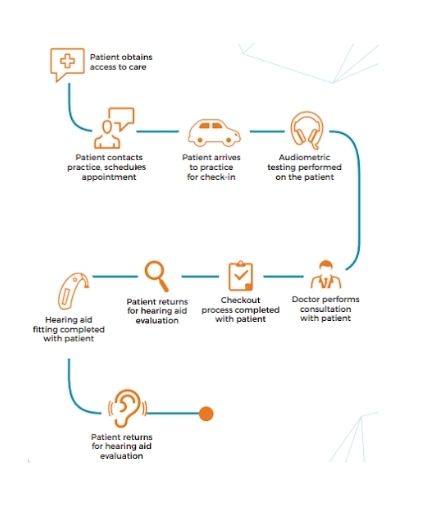You’ve hired top talent for your practice, installed cutting-edge equipment, fostered a culture of collaboration, and focused on the highest-quality care, but have you optimized your patient scheduling?
Schedule optimization plays a bigger role in operational efficiency, patient satisfaction, staff morale, and revenue generation than some may realize, so it’s crucial to tackle it head-on. Here are four tips for making the most of your scheduling — benefiting your patients and the practice.
1. Remember Why It Matters
Did you know, according to a 2017 study by BrightLocal, 85% percent of consumers trust online reviews as much as personal recommendations? Optimized scheduling improves the patient experience, which means more patient referrals and more positive online reviews.
In addition, optimized scheduling helps you:
- Improve company culture
- Maximize marketing dollars
- Be punctual with your patients
- Right-size the time needed with each patient
- Align patient care with physician quality of life
- Hire when it’s most efficient and beneficial to the practice
What are the potential downfalls of not optimizing your schedule?
- Unhappy patients
- Increased patient wait times
- Poor communication with patients
- Mistakes in billing from feeling rushed
- Greater stress among patients, staff, and physicians
- Forced inequities between patients and other responsibilities
- Decline in employee morale, with staff constantly feeling behind
2. Make It About Your Patients
Who are you putting first when creating your practice schedule — the patients, your team, or you? Centering the scheduling on the needs of patients not only changes the way physicians get patients but also how they want to help them.
One way to put patients first is to map your scheduling process through their lens. Walk through your practice’s process as the patient, getting a feel for wait times and rushed appointments. This provides perspective and highlights gaps and opportunities for improvement.
An example of what a scheduling process could look like

3. Get The Big Picture
Optimizing your schedule calls for a closer look at your current circumstances to determine what’s possible. What comprises your current patient mix? New patients versus current patients? Patients for ear, nose, or other issues? What’s the appropriate amount of time to allocate for each patient?
To calculate your patient capacity and ensure you are seeing the optimal amount and type of patients, we recommend creating a patient capacity calculator similar.
4. Make It a Team Effort
Optimized scheduling works only if everyone’s on the same page. Make sure the whole team is aware of the schedule changes, agrees to the new schedule process, and understands how it will benefit everyone. And before setting a go-live date, emphasize that:
- This requires putting patients first.
- The new scheduling approach comes with a learning curve and may bring challenges.
- Innovations like this represent an investment that takes time and effort but will pay off for patients, the team, and the practice.
Remember, 96% of complaints are customer service related. By having an optimized schedule that has a focus on your patients, you can significantly increase patient sanctification while increase your overall team moral.
How Can You Improve Your Schedule Right Now?
- Calculate your patient wait time.
- Review your schedule at least monthly.
- Discover the patient experience at your practice by pretending to be a patient.
- Identify attrition points: When or why do patients leave? Are all patient referrals getting scheduled? Are you communicating with the physician referral after seeing a patient? How many patients are you losing based on scheduling? How many are lost based on wait time?
Keys to Sticking to Your New Systems and Schedule
- Get buy in from the beginning. Don’t simply roll out a new schedule plan or system before team members have buy-in and understand the benefits to patients and the practice as a whole.
- Train the people involved in the process. Once everyone has bought into the new plan, ensure you are training the people who will be impacted. This might require separate training for each position (Front office, office manager, audiologist and physician)
- Ensure the Clinicians have what they need
- Conduct regular people and process audits. Your practice needs will change, employees come and go, so it is critical that you don’t simply launch a new system and let it be. Shadow and coach staff within key roles to ensure new processes and systems are being followed correctly. Review reports monthly and spot any issues with the new systems and adjust quarterly.
Optimizing your practice’s schedule is easier than you might think, and Audigy can help. Our business experts can make recommendations and create an implementation plan based on the size of your practice. If you have questions on how to best optimize your patient schedule, please reach out to our Audigy team today.

